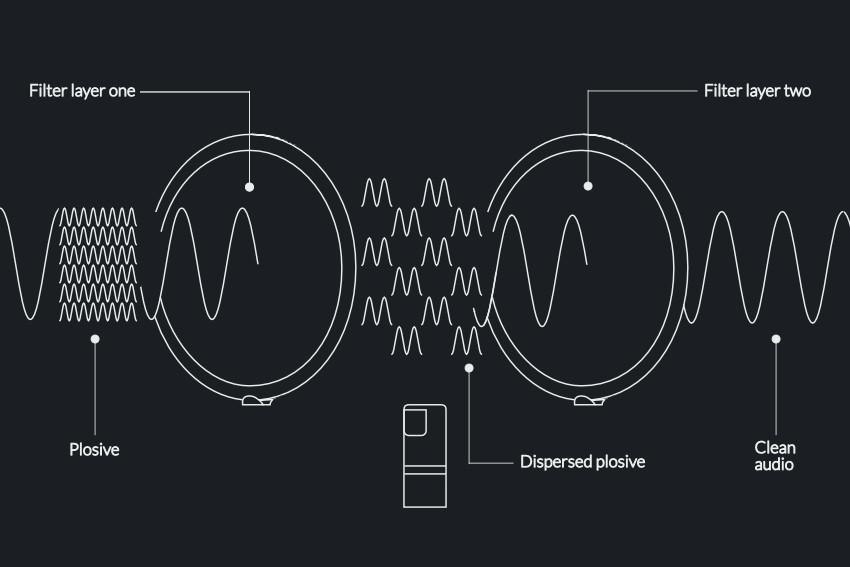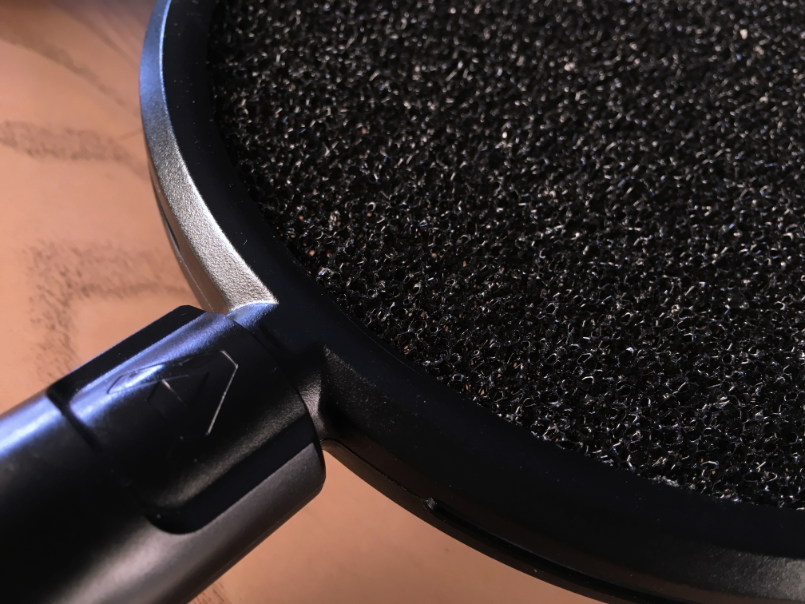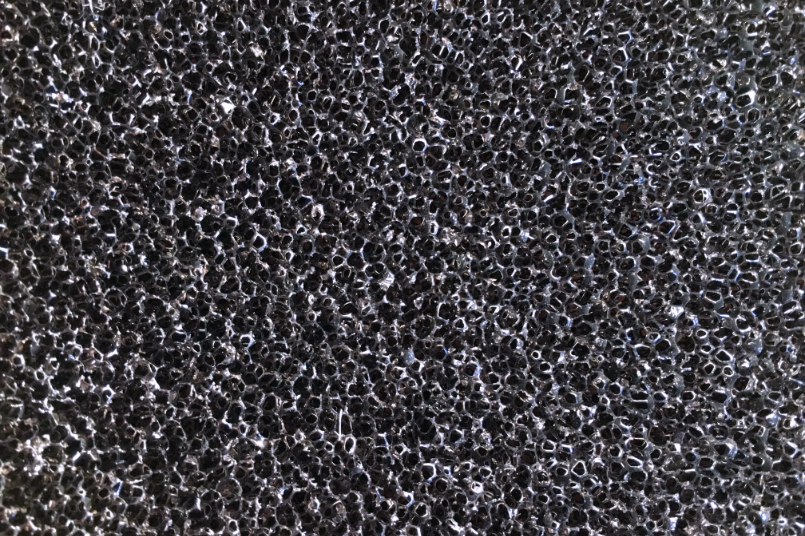Explained.
How Our Filters
Stop Pops.
Dual layer, single layer, metal mesh, fabric, foam… There are a lot of different terms and material types thrown around when looking at how Pop Filters stop pops. This is because not all Pop Filters work in the same way and here we’ll be looking at how exactly our filters work to stop plosives from ruining your recordings.
Dual Layer Approach
The most common approach is to use two layers of material to slow the air blasts down. It’s the high velocity air blasts from plosives that can cause distortion on your microphone, so by simply slowing down the air blasts we can remove the distortions. The dual layer approach works by using two layers of material with an air gap between them.
The first layer breaks up the initial blast, where the air passes through the material and is dispersed so what was initially one area of high velocity air is broken down. The air gap gives room for this broken up air to diffuse before the same process occurs as the air passes through the second layer. This second layer helps to break it up even more and remove plosives entirely.
This approach is taken on both our Fabric and Metal filters.

Foam
Our foam filter works in a slightly different way as the Pop Filter is made up of a single layer of 0.4cm thick foam.
To understand how our foam filter works we need to look at the material we are using. The foam Pop Audio uses is open cell, 30PPI (pores per inch) foam. In this close up picture you can see that the foam is made up from hundreds of tiny cells throughout and it is these cells that stop the pops so effectively, as well as making the material highly transparent.


In essence these cells work as individual dual layer Pop Filters. By having hundreds of small air gaps throughout the material the process of breaking up the air blast happens over and over again as the sound travels through. This means the energy of the plosive that causes the microphone to distort is easily taken out by the time the sound travels from one side to the other.
It also gives us another benefit in that because the actual amount of material within the foam is so low, it is in fact mostly just free space and air. The result is that the sound we hear that has passed through the foam is completely unaffected by the material and so is left unchanged and acoustically intact.
